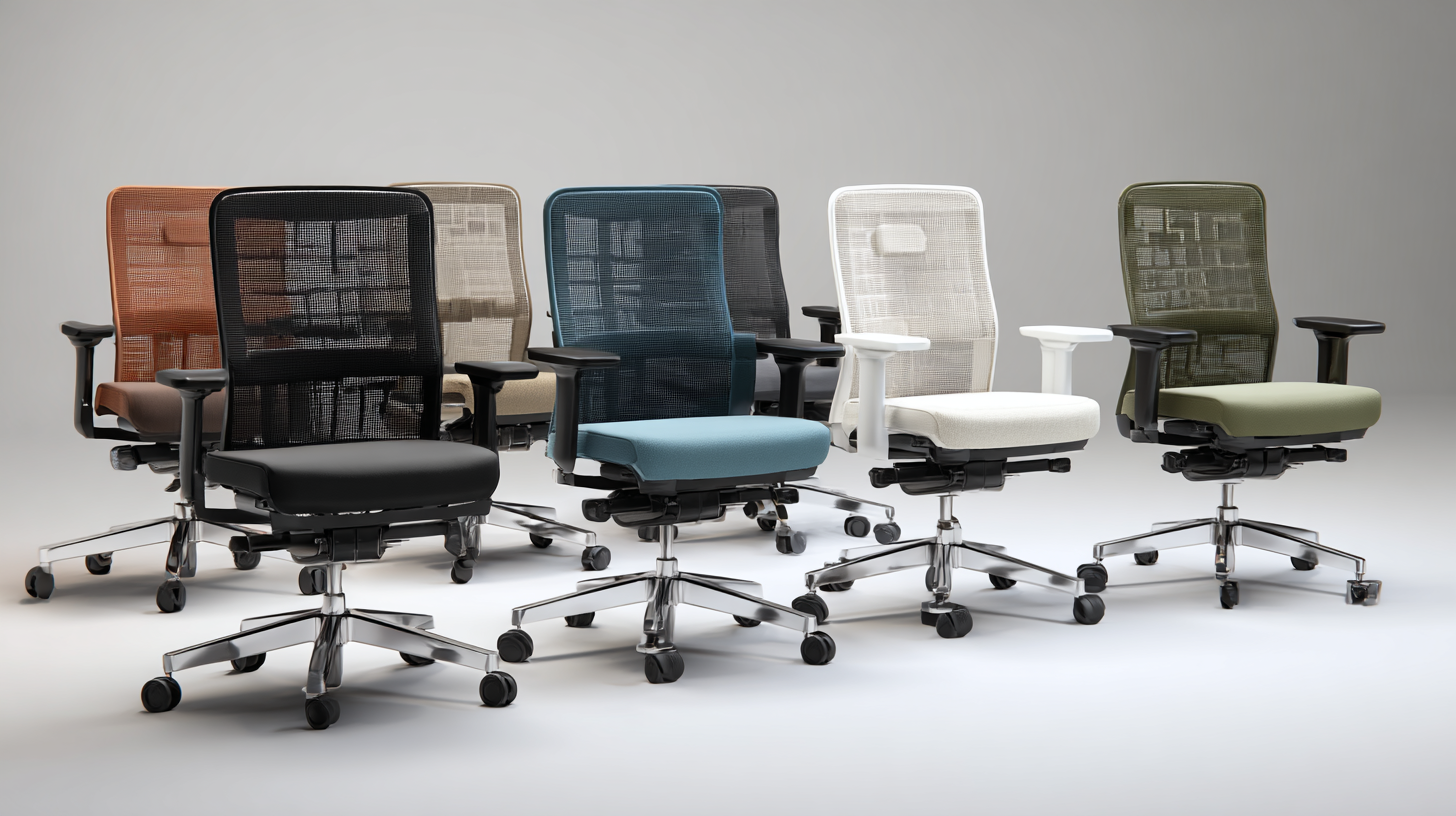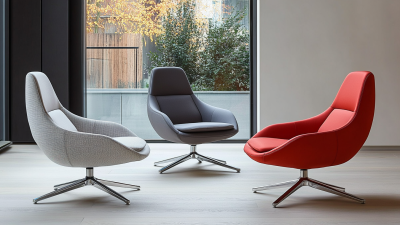In today's fast-paced work environment, the importance of ergonomics cannot be overstated, especially when it comes to task chairs. Research indicates that employees spending prolonged hours seated in poorly designed chairs can experience significant discomfort, leading to decreased productivity. According to a report by the American Psychological Association, ergonomic improvements, including the use of high-quality task chairs, can reduce workplace injuries by up to 20%, simultaneously enhancing overall job satisfaction.

Furthermore, a survey by the International Journal of Industrial Ergonomics found that ergonomic interventions in the workplace can boost productivity by an impressive 30%. This underscores the critical role that task chairs play in fostering a supportive work atmosphere. By prioritizing comfort and proper support in chair design, companies can enhance employee well-being and performance, creating a win-win situation for both staff and employers alike.
In today’s fast-paced work environment, the significance of ergonomics cannot be overstated. Ergonomics, the science of designing the workspace to fit the user’s needs, plays a crucial role in enhancing employee well-being and productivity. By prioritizing ergonomic principles, organizations can create an environment that reduces physical strain and discomfort. This approach not only fosters a healthier workspace but also minimizes the risk of work-related injuries, which can lead to increased absenteeism and decreased morale.
Investing in ergonomic task chairs is a vital component of this strategy. Properly designed chairs provide essential support to the spine, promote good posture, and offer adjustable features that accommodate individual preferences. When employees are comfortable and supported, they are able to focus better and work more efficiently.Numerous studies have shown that comfortable seating can significantly enhance cognitive function, leading to improved performance and productivity. As businesses continue to recognize the importance of ergonomics, they are likely to see a direct correlation between employee comfort and overall organizational success.
Ergonomic task chairs are designed to support the body’s natural alignment, promoting comfort and enhancing productivity during long hours of work. One key feature is adjustable seat height, which allows users to align their feet flat on the ground, reducing strain on the lower back and encouraging better posture. Additionally, chairs with adjustable armrests help alleviate shoulder tension by allowing the arms to rest comfortably, ultimately decreasing the risk of repetitive strain injuries.
Another important aspect of ergonomic chairs is lumbar support. Proper lumbar support maintains the natural curve of the spine, providing critical reinforcement to the lower back. This can significantly reduce discomfort and fatigue, enabling employees to focus better on their tasks. Furthermore, breathable materials and ample cushioning play a vital role in temperature regulation and overall comfort, ensuring that users remain engaged and alert throughout their workday. Investing in ergonomic task chairs is essential for creating a healthier, more productive workspace.
The relationship between comfort and productivity is a crucial factor in workplace efficiency. Numerous studies have shown that comfortable seating, particularly ergonomic task chairs, significantly influences an employee's overall performance. When workers sit in chairs designed to support their posture and reduce physical strain, they are more likely to experience enhanced focus and prolonged periods of concentration. This not only leads to increased output but also minimizes the risk of work-related injuries, such as back pain or repetitive strain injuries.
Furthermore, the psychological impact of comfort on productivity cannot be overlooked. Employees who feel physically comfortable tend to report higher levels of job satisfaction and engagement. This sense of well-being fosters a positive work environment where creativity and collaboration can flourish. By prioritizing comfort in the workplace through ergonomic furniture, organizations can create a culture that not only boosts productivity but also promotes employee health and happiness, ultimately leading to better business outcomes.
| Ergonomic Feature | Impact on Comfort (1-10) | Impact on Productivity (1-10) | Recommended Adjustment Frequency |
|---|---|---|---|
| Seat Height Adjustment | 9 | 8 | Every Day |
| Lumbar Support | 10 | 9 | Weekly |
| Armrest Adjustment | 8 | 7 | Every Two Days |
| Backrest Tilt | 7 | 8 | As Needed |
| Seat Depth Adjustment | 8 | 6 | Monthly |
When choosing the right ergonomic task chair, consider your daily activities and how they affect your posture. An ideal chair should support a natural spine alignment, reducing the risk of discomfort during long hours of work. Look for adjustable features such as seat height, backrest angle, and lumbar support, which allow you to customize the chair to fit your unique body shape and working style.
Another crucial factor is the materials used in the chair. Breathable fabrics help maintain a comfortable temperature, while cushioned seats provide the necessary support to prevent fatigue. Test the chair for adequate width and depth to ensure you have enough space to move comfortably, and check if the armrests can be adjusted or removed to prevent any strain on your shoulders.
Finally, consider your workspace aesthetics. An ergonomic chair that complements your décor can enhance your workspace’s appeal while prioritizing comfort and productivity. By focusing on these essential tips, you can find a task chair that not only boosts your productivity but also safeguards your well-being during long hours at your desk.

Creating an ergonomic workspace is crucial for maximizing productivity and comfort. One effective strategy involves strategic office arrangement. Begin by ensuring that desks and task chairs are set at proper heights, allowing employees to maintain a neutral posture. The elbows should be at a 90-degree angle while typing, and feet should rest flat on the floor, promoting better circulation and reducing fatigue. Adding footrests can further enhance stability, especially for shorter individuals.

In addition to furniture arrangement, the positioning of screens plays a vital role in ergonomics. Screens should be at eye level, about an arm’s length away, to prevent neck strain and eye fatigue. Consider using monitor stands or adjustable arms to achieve the right height. Additionally, incorporating standing desks into your office layout can encourage movement, breaking the prolonged sitting cycle and enhancing overall employee well-being.
Thoughtful arrangement of office space not only boosts comfort but also fosters a more productive work environment, leading to improved performance and job satisfaction.






Update your browser to view this website correctly. Update my browser now
